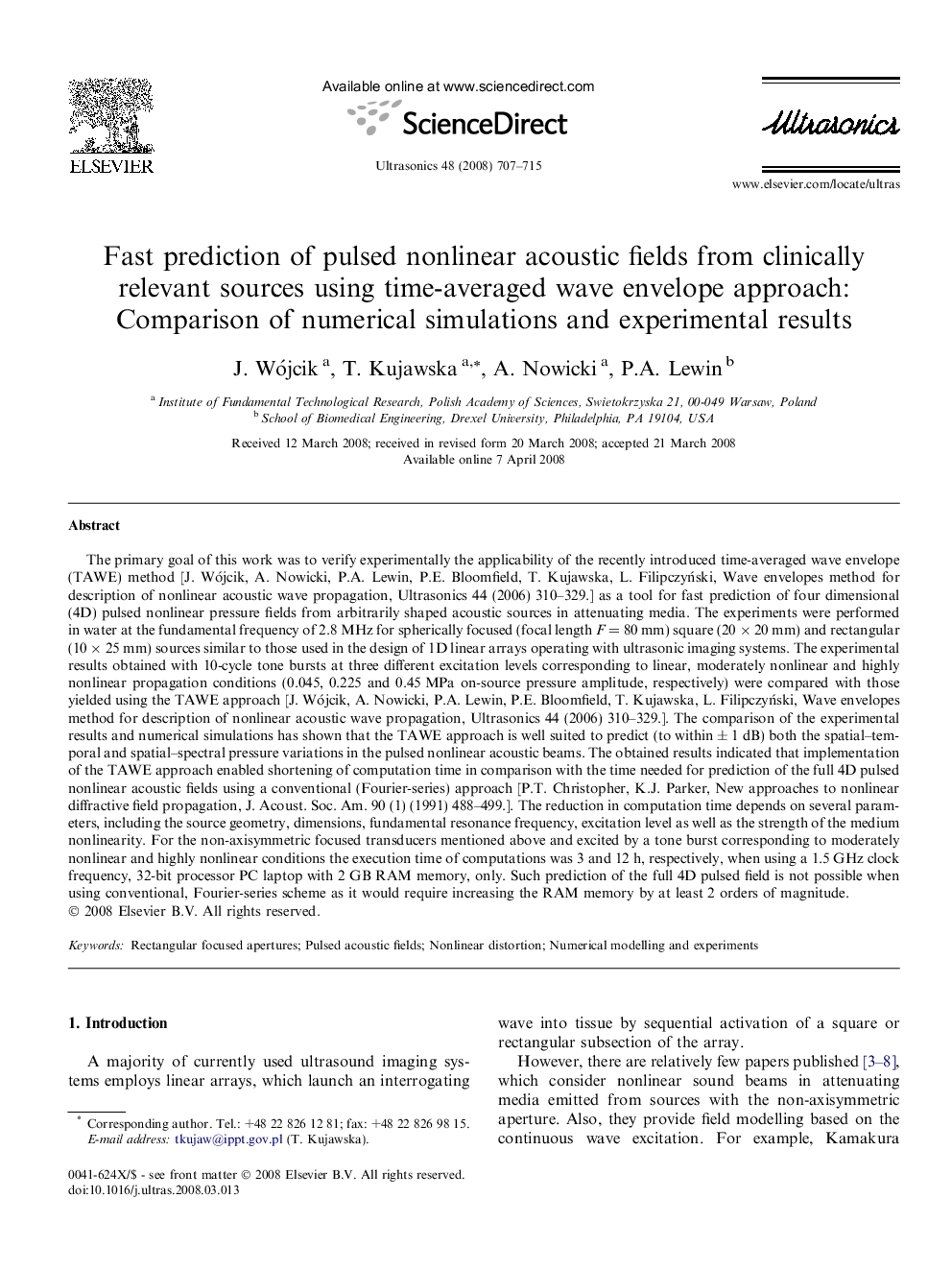| Article ID | Journal | Published Year | Pages | File Type |
|---|---|---|---|---|
| 1759813 | Ultrasonics | 2008 | 9 Pages |
The primary goal of this work was to verify experimentally the applicability of the recently introduced time-averaged wave envelope (TAWE) method [J. Wójcik, A. Nowicki, P.A. Lewin, P.E. Bloomfield, T. Kujawska, L. Filipczyński, Wave envelopes method for description of nonlinear acoustic wave propagation, Ultrasonics 44 (2006) 310–329.] as a tool for fast prediction of four dimensional (4D) pulsed nonlinear pressure fields from arbitrarily shaped acoustic sources in attenuating media. The experiments were performed in water at the fundamental frequency of 2.8 MHz for spherically focused (focal length F = 80 mm) square (20 × 20 mm) and rectangular (10 × 25 mm) sources similar to those used in the design of 1D linear arrays operating with ultrasonic imaging systems. The experimental results obtained with 10-cycle tone bursts at three different excitation levels corresponding to linear, moderately nonlinear and highly nonlinear propagation conditions (0.045, 0.225 and 0.45 MPa on-source pressure amplitude, respectively) were compared with those yielded using the TAWE approach [J. Wójcik, A. Nowicki, P.A. Lewin, P.E. Bloomfield, T. Kujawska, L. Filipczyński, Wave envelopes method for description of nonlinear acoustic wave propagation, Ultrasonics 44 (2006) 310–329.]. The comparison of the experimental results and numerical simulations has shown that the TAWE approach is well suited to predict (to within ± 1 dB) both the spatial–temporal and spatial–spectral pressure variations in the pulsed nonlinear acoustic beams. The obtained results indicated that implementation of the TAWE approach enabled shortening of computation time in comparison with the time needed for prediction of the full 4D pulsed nonlinear acoustic fields using a conventional (Fourier-series) approach [P.T. Christopher, K.J. Parker, New approaches to nonlinear diffractive field propagation, J. Acoust. Soc. Am. 90 (1) (1991) 488–499.]. The reduction in computation time depends on several parameters, including the source geometry, dimensions, fundamental resonance frequency, excitation level as well as the strength of the medium nonlinearity. For the non-axisymmetric focused transducers mentioned above and excited by a tone burst corresponding to moderately nonlinear and highly nonlinear conditions the execution time of computations was 3 and 12 h, respectively, when using a 1.5 GHz clock frequency, 32-bit processor PC laptop with 2 GB RAM memory, only. Such prediction of the full 4D pulsed field is not possible when using conventional, Fourier-series scheme as it would require increasing the RAM memory by at least 2 orders of magnitude.
